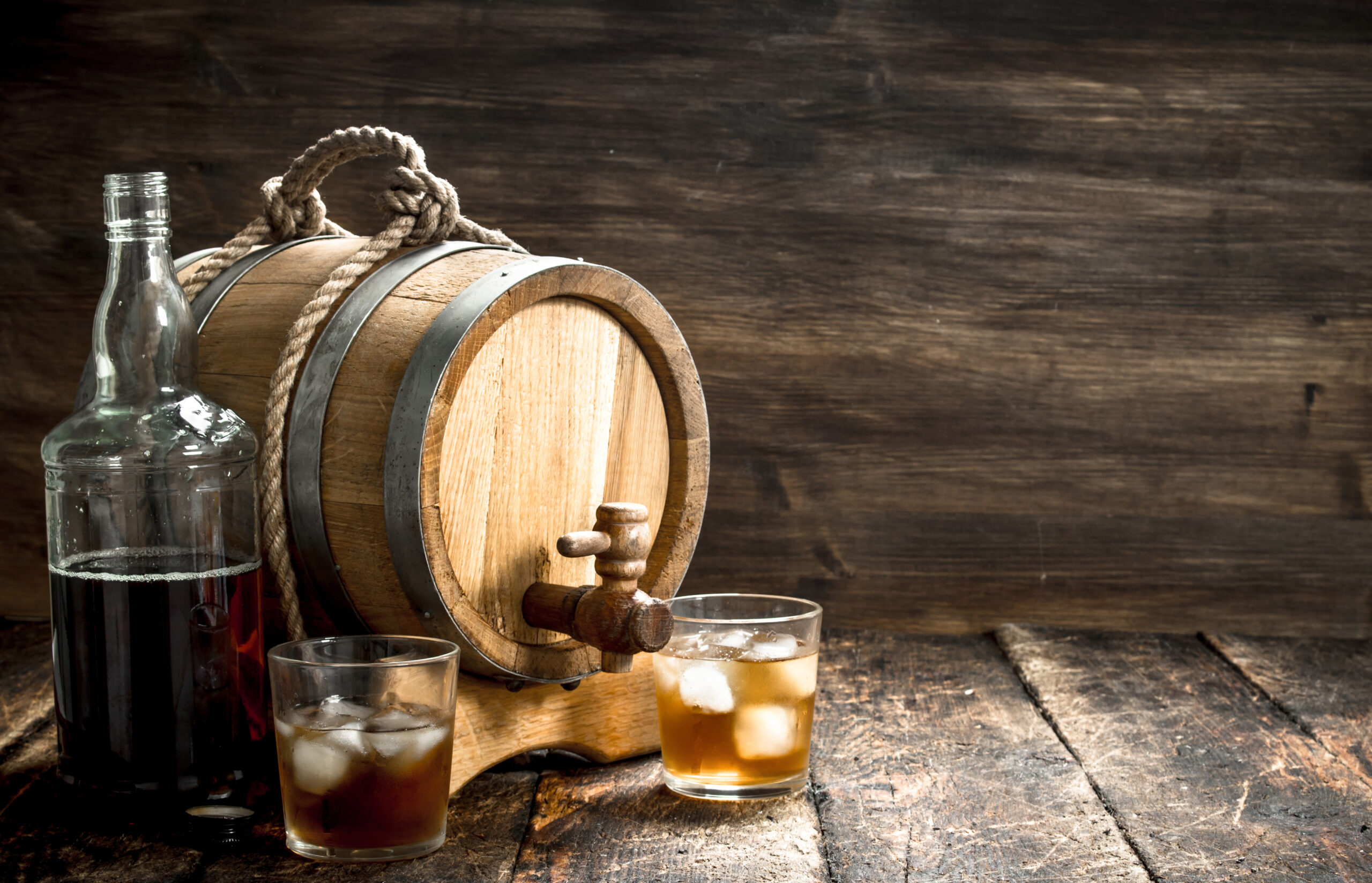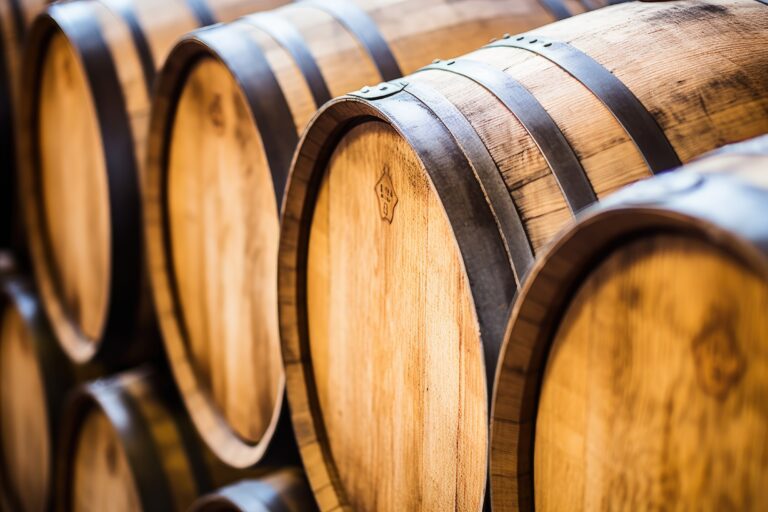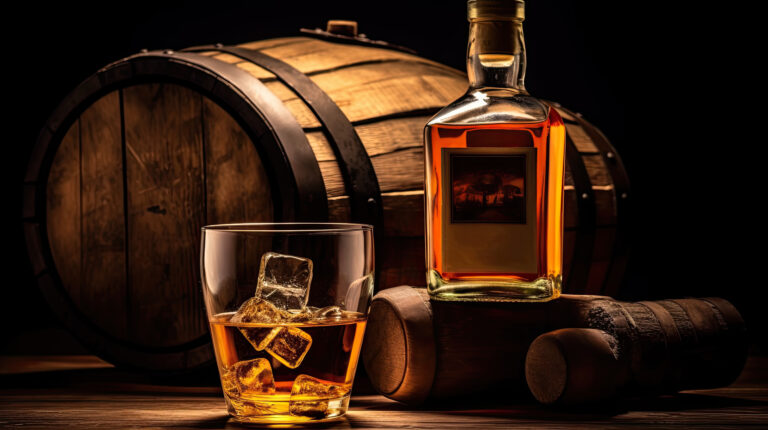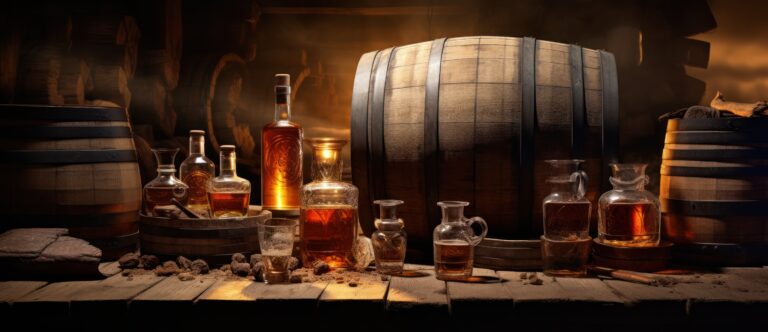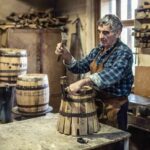Ever wonder what gives whiskey its distinctive kick? It’s not just the grains or the aging. The real magic happens with the barrels, specifically how they’re toasted. Toasting, done before the whiskey ages, is a flavor powerhouse.
Think of it this way: when whiskey barrels are made, they’re charred inside with fire. This charring, also called toasting, breaks down the wood and caramelizes the sugars, creating a flavor explosion. Lightly toasted barrels give you brighter fruit and spice, while heavily toasted ones bring out richer notes like vanilla, caramel, and chocolate.
So, next time you pour a glass, take a moment. Those subtle flavors and aromas? They’re all thanks to toasting, which turns plain oak into a flavor factory, crafting a taste experience unique to your whiskey. Toasting is the secret ingredient.
What’s the Deal with Toasting?
Toasting means hitting the inside of the barrel with an open flame. This caramelizes the wood, releasing flavors like vanilla, spice, and smoke, which then seep into the whiskey as it ages. The level of toasting—light to heavy—determines the flavor intensity.
Light toast = subtle flavors. Heavy toast = robust, smoky notes. Many distillers blend different toasts to create complex, balanced whiskeys. And the longer the whiskey ages, the more pronounced those oak and toast flavors become.
Toasting is an art. A master distiller has to nail things like flame intensity, time over the fire, and barrel rotation to get the perfect toast for their whiskey. It’s not an exact science, but when it’s done right, it’s pure magic in a glass.
Next time you savor your whiskey, think about the toasting process. Those vanilla and spice hints? Straight from the oak, a testament to the distiller’s skill. Toasting might be behind the scenes, but it makes all the difference.
Why Char Barrels Anyway?
When whiskey ages in charred oak, that charring (aka toasting) helps give the whiskey its rich flavors and aromas.
Toasting caramelizes the wood sugars, creating vanilla, caramel, and toast flavors. The charred wood also acts like a filter, mellowing the whiskey by absorbing harsh compounds.
The level of char, from light to heavy, depends on what the distiller wants. Light toast = subtle flavors. Heavy char = richer, smokier notes. The charred wood releases aromatic compounds (like lignin) that give the whiskey scents of coconut, spice, and smoke.
As the whiskey ages, the alcohol pulls out flavors from the charred wood. Vanillin (the vanilla flavor compound) is a byproduct of toasting. The heat also changes other compounds in the wood, creating chocolate, coffee, and nut flavors.
The longer a whiskey ages, the more it absorbs from the barrel. Young whiskeys get vibrant, spicy notes, while older ones become mellow as the char fades over time. Char levels and barrel types have a huge impact on the final flavor. For distillers, toasting is both art and science.
With the right wood and char, toasting lets distillers create tons of different flavors. For us whiskey lovers, it’s why no two whiskeys taste exactly alike.
Toasting Levels and Their Flavor Impact
How much a barrel is toasted has a huge impact on the whiskey’s flavor. Here are the main levels:
- Light Toast: Just a light char, bringing out the oak’s natural flavors. Think subtle vanilla, caramel, oak, and a hint of spice. The wood is prominent but balanced. Many bourbons use this.
- Medium Toast: More intense oak, with cocoa, coffee, and nut notes. More sugars are caramelized, giving a slightly smoky sweetness. Ryes and Canadian whiskies often use this, resulting in a robust but balanced flavor.
- Heavy Toast: A significant char, creating bold chocolate, molasses, maple, and smoke flavors. The heaviest toasts can even have charcoal and ash notes. While intense, these whiskeys can lack balance. Some distillers use heavy toasting just for the final aging stage.
Ultimately, it’s up to the distiller. Lighter toasts highlight the spirit and wood, while heavier ones create bolder, smokier flavors. Even small changes in toasting can make a big difference. Barrel making and charring is an art, and toasting is key to a whiskey’s unique flavor.
How Toasting Creates Vanilla and Caramel
Toasting is essential for those complex whiskey flavors. Here’s how it works:
- Light Toast: A short fire exposure, lightly charring the barrel. This brings out subtle wood flavors like fresh oak, wood spice, and vanilla. These whiskeys are lighter in color and let the grain flavors shine.
- Medium Toast: More intense wood flavors. Caramel and vanilla appear, along with spice hints. The whiskey gets a warmer, amber color. Many bourbons use this for a balance of wood and grain.
- Heavy Toast: A deep char, creating even stronger wood flavors. Think roasted coffee, dark chocolate, nuts, and burnt sugar. The whiskey becomes darker. These barrels are often used to finish whiskeys for added richness.
Reusing Barrels
Barrels are often reused. With each use, they impart less oak flavor, but more complex notes emerge from the mingling of previous flavors. It’s economical and eco-friendly.
Toast level, barrel char, wood type, and age all work together to create those distinct whiskey flavors. Master distillers carefully select and combine barrels for each brand’s signature taste.
The Maillard Reaction
The Maillard reaction (between amino acids and sugars) is responsible for many whiskey flavors during aging. In charred oak, this reaction creates hundreds of flavor and aroma compounds like vanilla, toffee, and spice.
Caramelization
The barrel’s heat also caramelizes the wood sugars, creating sweet caramel flavors. The longer a whiskey ages, the more caramel flavors develop, like maple syrup, molasses, or burnt sugar.
Oak Extractives
The whiskey also absorbs aromatic compounds (oak extractives) from the wood, like coconut, clove, and nutmeg, contributing to the spicy, woody flavors.
Other Reactions
Other reactions create fruity notes (apple, banana) and lactones (coconut, peach, apricot). Phenols from the wood give smoky, spicy flavors.
All these barrel-derived flavors blend over time, creating the distinctive character of aged whiskey. The Maillard reaction is especially important, creating the depth of flavor that only comes from years in a charred oak cask. The whiskey absorbs the wood’s essence, creating a unique spirit.
Regional Toasting Styles
Barrel aging is key to whiskey flavor. The barrel type and toasting significantly affect the aroma, taste, and finish. Toasting styles vary by region.
- American: Bourbon uses charred new oak, which caramelizes the wood, giving sweet vanilla and caramel notes. The porous oak allows for more interaction, resulting in bold flavors.
- Scotch: Uses barrels previously used for sherry or bourbon. They’re lightly toasted, allowing subtler flavors like spice, fruit, and nuttiness to come through. Reusing barrels also mellows the whisky.
- Japanese: Often uses barrels from Scotland or America, plus native Mizunara oak, which adds sandalwood and coconut notes. Japanese distillers are known for their delicate, balanced toasting.
- Canadian: Uses barrels previously used for bourbon or rye, lightly toasted to preserve the grain flavors. Some use virgin oak, but with a lighter toast.
The specific temperatures and times result in the distinctive flavors of each region. From bold bourbon to fruity Japanese whisky to rye-forward Canadian whisky, toasting is the alchemy that turns distillate into ambrosia. Understanding regional toasting helps us appreciate the nuances of our favorite drams.
Wood Type Matters
The wood used for barrels is crucial for flavor. The most common woods are American white oak, French oak, and red oak. White oak is usually considered the best.
- American White Oak: Tight grains allow for deep liquid penetration, resulting in the absorption of vanilla, caramel, and spice flavors. It also contains lactones, which give a sweet, coconut flavor. Barrels are usually charred or toasted, creating smoky, toasty flavors.
- French Oak: Used for wines like Cabernet Sauvignon, it imparts more intense flavors than American white oak, accentuating fruity, floral notes with clove and nutmeg hints. It’s less porous, so flavor develops slower. Distillers often use it for blending.
- Red Oak: Rarely used because it contains unpleasant tannins. Some distillers experiment with it in small amounts, blended with white oak, adding spice, molasses, and nutty flavors.
The wood type depends on the distiller’s desired flavor. By using different woods and varying toasting and charring, whiskey makers create unique spirits. Think about the wood next time you sip your whiskey.
Temperature and Humidity
Temperature and humidity significantly influence how whiskey ages.
- Temperature: Higher temperatures speed up aging, but too high can lead to bad flavors. Most distillers aim for 45-65°F. Colder temperatures slow aging, sometimes stopping it completely.
- Humidity: Higher humidity causes wood to swell, allowing more whiskey to penetrate, increasing the surface area for reactions and flavor extraction. Lower humidity shrinks the wood, slowing aging. Too low, and the wood can become brittle, imparting unpleasant woody flavors. Most distillers prefer 65-85% relative humidity.
Warmer temperatures with higher humidity accelerate aging, while cooler temperatures and lower humidity slow it down. Finding the right balance is key.
By controlling temperature and humidity, distillers significantly impact how fast their whiskey ages and develops complex flavors. The right conditions can make the difference between a balanced whiskey in a few years versus decades.
Toasting FAQs
The flavor of whiskey depends greatly on the barrel it’s aged in. Barrel toasting plays an important role in developing the distinctive taste of your favorite whiskey.
What is barrel toasting?
Barrel toasting refers to lightly charring the inside of whiskey barrels before adding the distilled spirit. The barrels are briefly exposed to an open flame, which causes chemical reactions in the wood that impart flavor compounds to the whiskey.
Why is barrel toasting important?
Toasting the barrels adds flavor notes like vanilla, caramel and smoke to the whiskey. The level of toasting – light, medium or heavy – determines how much flavor is imparted. More heavily toasted barrels produce whiskeys with stronger, smokier flavors. Lighter toasting results in subtler, sweeter notes.
How does barrel toasting affect taste?
As the whiskey ages in the barrel, it absorbs flavor compounds from the toasted wood like vanillin, lactones and tannins. These compounds infuse the whiskey with notes of vanilla, coconut, clove and spice. The charred wood also adds a smoky flavor from compounds like furfural, guaiacol and 4-methylguaiacol.
Do all distilleries toast their barrels?
Most distilleries toast their barrels to some degree, but some opt for lighter toasting and others more heavy toasting. A few distilleries don’t toast their barrels at all, producing a whiskey with flavor primarily from the natural wood compounds. The level of toasting is a key factor that distinguishes whiskeys from different distilleries.
How does barrel toasting compare to barrel charring?
Barrel charring, or burning, produces a deeper layer of char in the barrel. This results in whiskeys with even stronger, smokier flavors than barrel toasting alone. Many bourbon distilleries use a combination of toasting and charring to create their signature flavor profiles.
In the end, barrel toasting allows distillers to craft a whiskey as unique as your taste.
Final Thoughts
Next time you enjoy your whiskey, remember the barrel’s role. Toasting, in particular, is key to those complex flavors. Now you know the care and craft behind aging. Appreciate each note and aroma. See if you can detect the barrel’s influence in your next whiskey. It’ll open up a whole new world of enjoyment.
